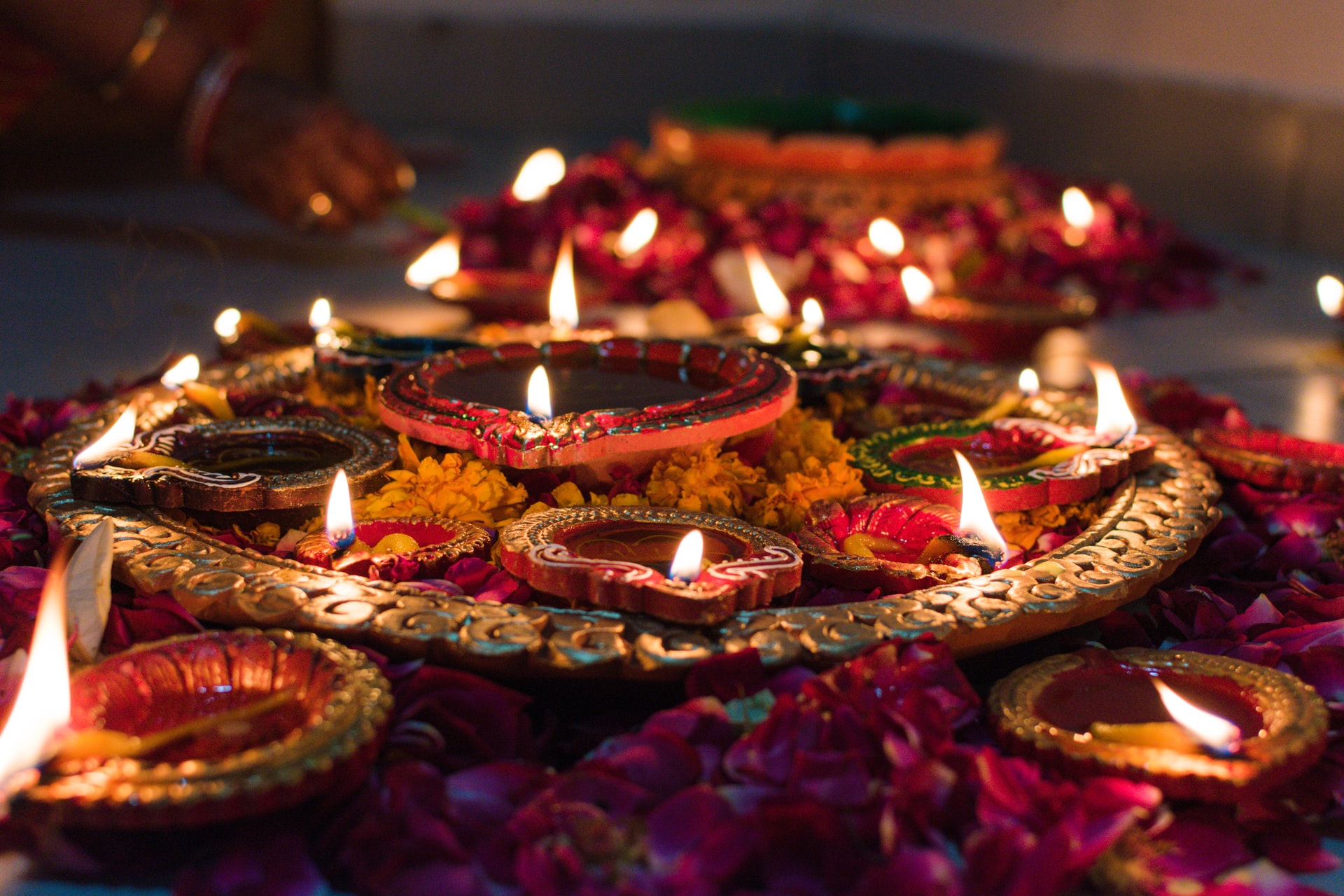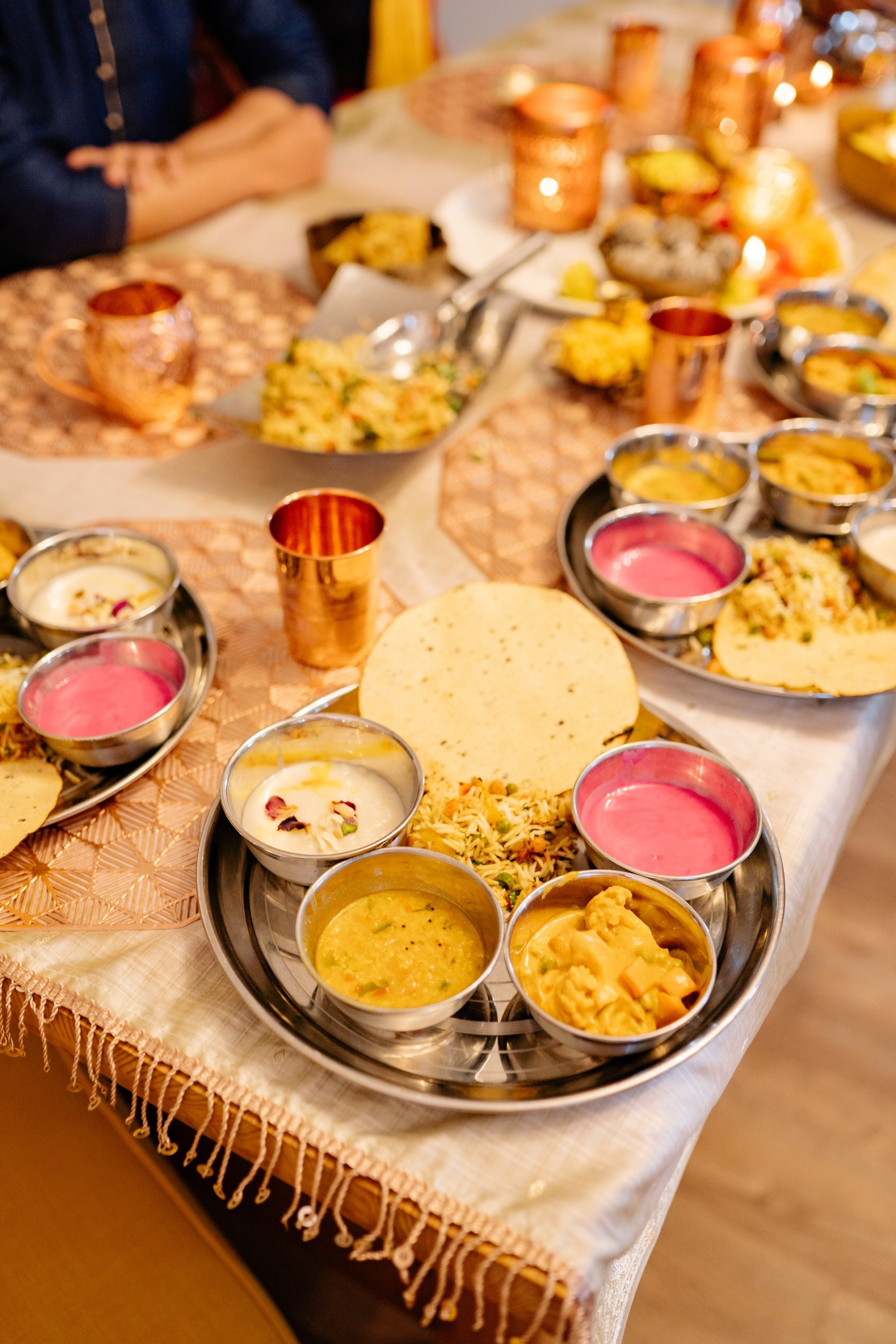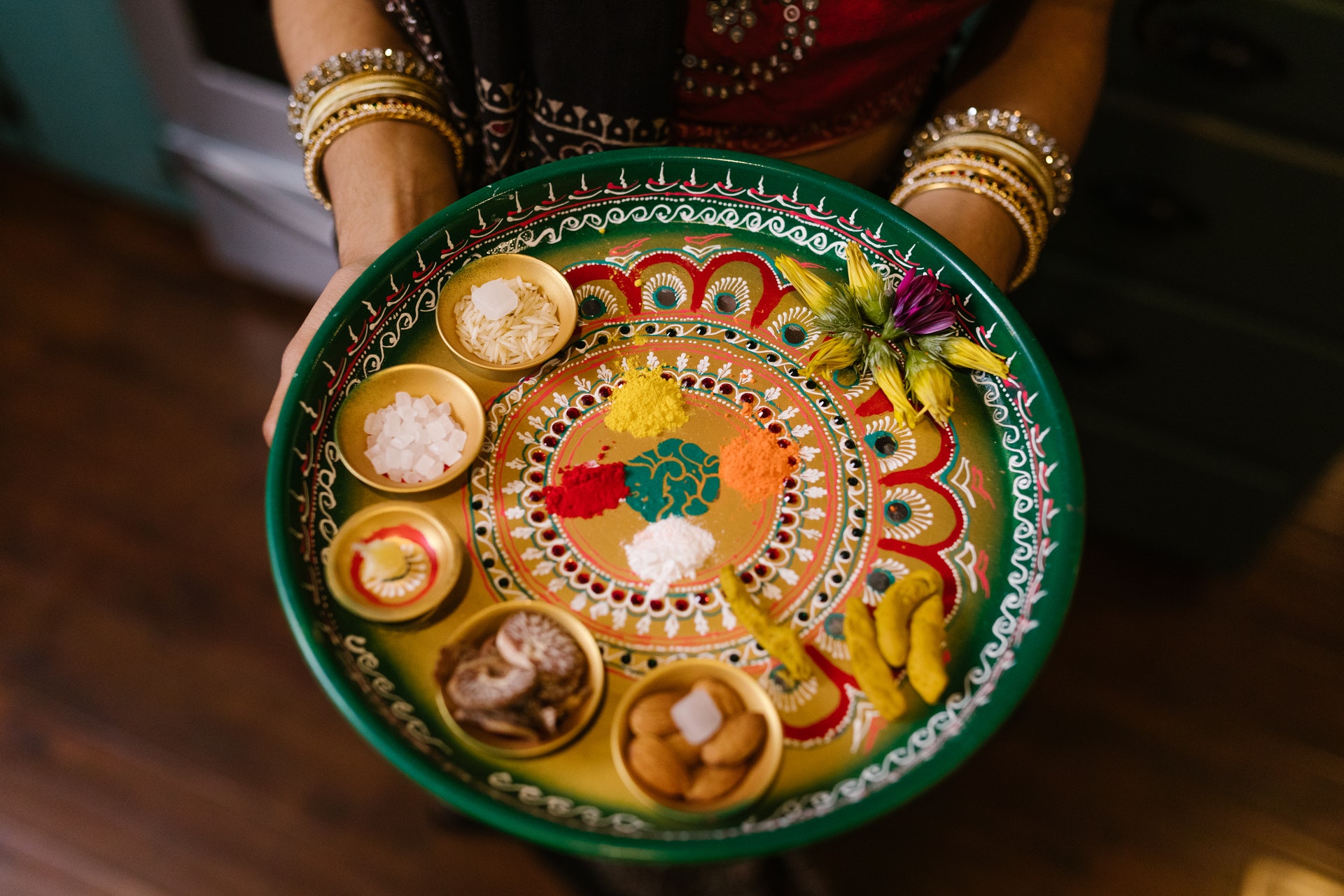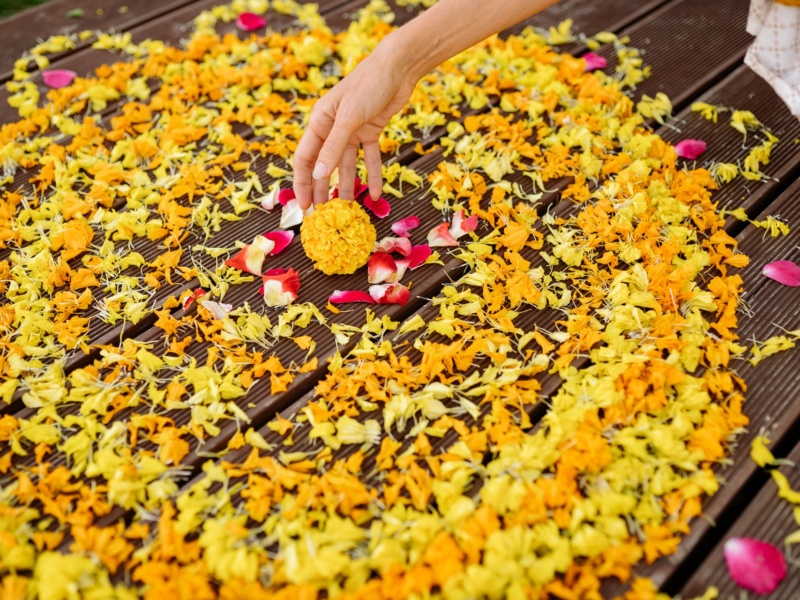Deepavali or Diwali translates as the ‘festival of lights’. It marks the spiritual triumph of light over darkness, good over evil, and knowledge over ignorance. It is celebrated In India and across the world by Hindus and Jains, Sihks and some Buddhists on the 15th day of the month of Kartik (the 8th month of the Hindu lunar year). This coincides with the harvest season and the new moon between mid-October and mid-November. The day of Diwali itself is the day of Amavasy (the new moon) which is holy to Hindus and is considered the darkest night of the year. It’s a time for families and loved ones to come together.
Preparations including cleaning and renovating, buying new clothes, decorating the home and cooking food, occur days and even weeks before. Celebrations are for five days, with each day signifying a different meaning:
- Dhanteras: During the churning of the sea, Goddess Lakshmi emerged from the ocean of milk with a pot of gold. The God of wealth, Lord Kuber, is also worshipped. Buying silver, gold, metal items and ornaments is said to ward off bad luck.
- Naraka Chaturdasi (Choti Diwali): Lord Krishna killed the demon Narakasura. People wake up early, enjoy a bath with herbal oils, wear new clothes and offer puja. In the evening the diyas are lit.
- Lakshmi Puja: the main day of Deepavali. Lord Ram returned to the Kingdom of Ayodhya after conquering Ravana. The people lit colourful diyas to welcome him back. Lakshmi and Lord Ganesha are also worshipped.
- Govardhan Puja: honouring Lord Krishna who lifted the Govardhan mountain over people’s heads to protect them from Lord Indra’s incessant rain.
- Bhai Dooj: a celebration between brothers and sisters.
Homes, temples, business and streets are all decorated and lit up. There are lighted oil lamps (diyas) and candles and in the main doorway lies a vividly-coloured ‘rangoli’, created out of flour, rice or petals. Its purpose is to usher in deities to bless the home for the upcoming year. It might be a detailed representation of an animal or nature, or a floral or geometric pattern.
Festivities include wearing new clothes, feasting together, enjoying fireworks, sharing mithai (sweets) and gift giving. Pooja (prayers) are offered to the goddess Lakshmi, and doors and windows are left open to allow her to enter and offer prosperity and fertility. Many families have a small alter to Lakshmi where they offer money and pray. It is also a time to settle disputes and debts, offer peace and for loved ones to come together in reunion. Family and friends exchange delicious sweets such as pedas (sweets make with khoa, sugar and flavoured with cardamom seeds, saffron and pistachios), barfis (sweets made with condensed milk and sugar), ladoos (sweet balls of various kinds), kaju katli (a fudge-like sweet made with ground cashews, sugar, ghee and rose water) jalebis (sweet fried bread), dried fruit and chocolates.




